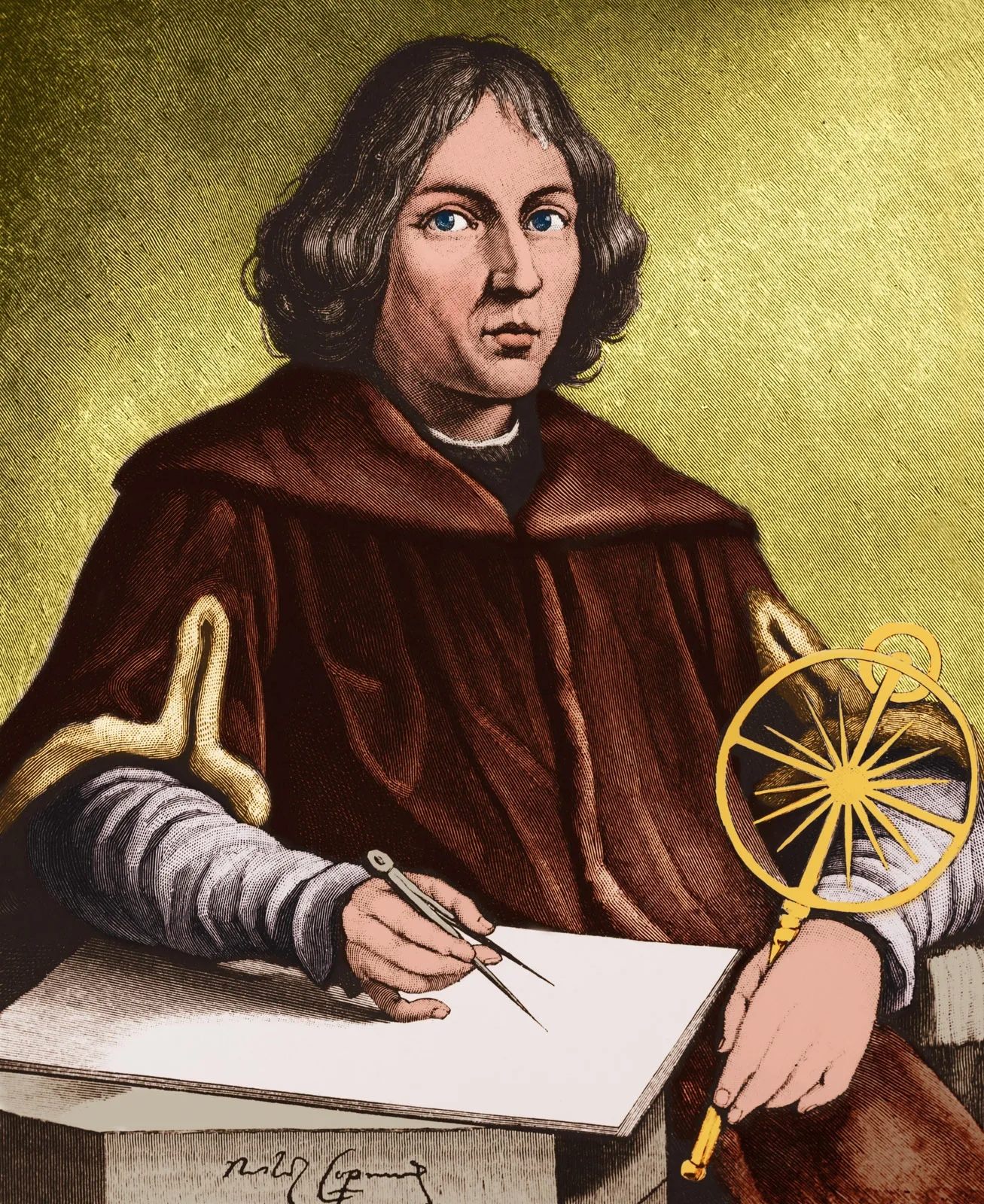
Source: https://www.britannica.com/biography/Nicolaus-Copernicus
Nicolas Copernicus was both a mathematician and an astronomer, born on February 19th 1473 and passed on May 24th, 1543. He studied astronomy and astrology at the University of Cracow, leaving before completing his degree. His most important work was establishing the heliocentric model of the solar system. He challenged the geocentric model that stated the earth was at the center of both our solar system and the universe, where everything orbited the earth. His heliocentric model placed the Sun at the center of the solar system, with planets, including earth, orbiting around it.
During the same period, in 1534, England broke away from the Catholic Church. They became a protestant country under King Henry. King Henry declared himself the Supreme Head of the Church of England and declared the country’s independence from papal authority. Additionally, in 1501, Spanish colonists began importing enslaved Africans from the Iberian Peninsula to their colony on the Island of Hispaniola. These first Africans were enslaved in Europe prior to arriving in Hispaniola. Many of them were Spanish and Christian.
Lastly, Copernicus’ lifetime encapsulates most of Leonardo da Vinci’s life (April 15, 1452- May 2, 1519). Leonardo da Vinci is most famously known for the Mona Lisa, the most famous piece of art of all time. It was painted some time between 1503 and 1519, while he was living in Florence, Italy.
This research opened my eyes to the timing of our understanding of the universe. It surprised me that we only grasped the orbit of our solar system around the time the slave trade to Hispaniola began and the Mona Lisa was painted. Before this study, I assumed we figured out space, our solar system, and that the earth did not lie at the center of the universe much earlier than many other historical events. However, my expectations were challenged when I discovered that Copernicus and Leonardo da Vinci lived in the same era, showcasing progress in both science and art during the Renaissance. Moreover, learning about events like the start of the slave trade in 1501 highlighted the complexity of historical periods, where scientific breakthroughs coincided with societal challenges.
Leave a comment